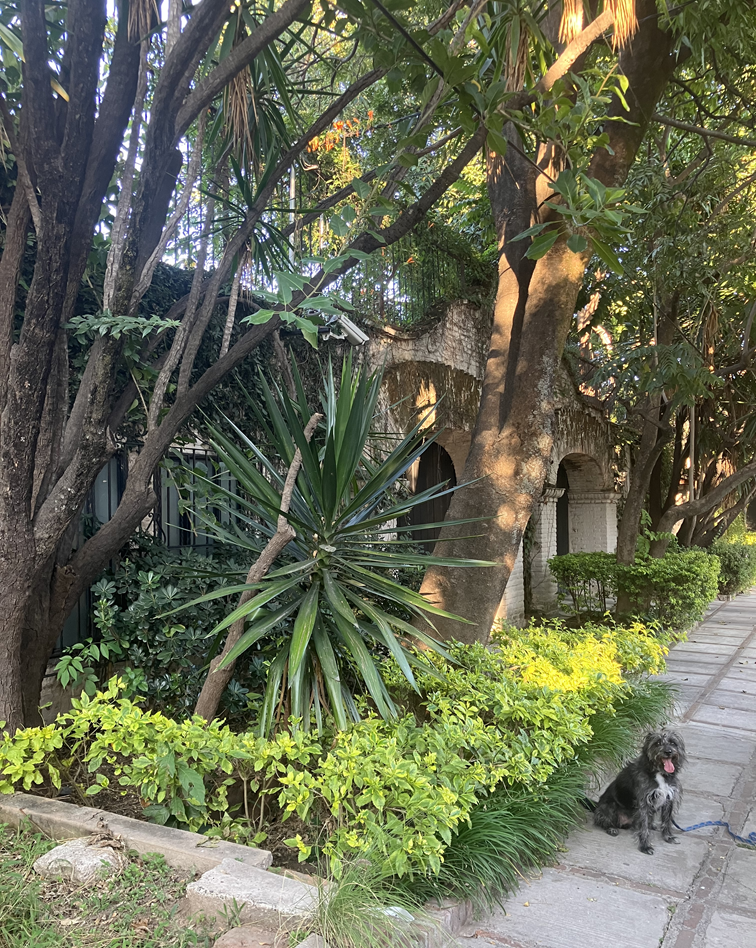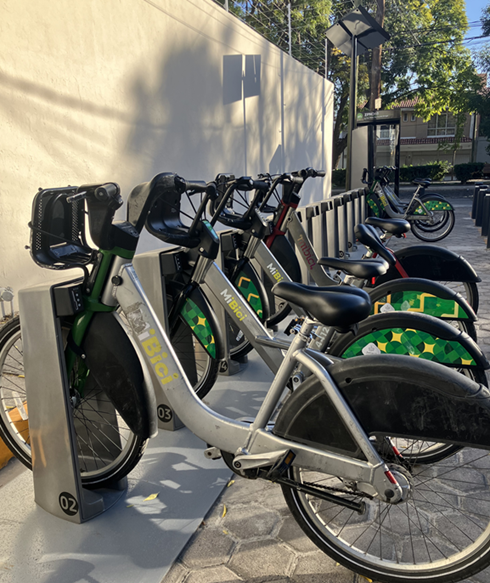I’m always looking for new tools that make daily tasks easier, faster, or more enjoyable.
That said, I could not have imagined how many mobile apps I’d begin using to help with situations in Mexico I’d never confronted back in the States.
Below are seven tools (dare we call them”expat apps?”) so integral to my everyday life in Mexico that I can’t imagine living without them.
WhatsApp. This free private messaging app is used by absolutely everyone in Mexico. It’s incredibly easy to learn and the best way to keep in touch with friends and myriad affinity groups you’re bound to get involved with.
You can use WhatsApp on your mobile device or a computer. It supports text and recorded voice messages, as well as calling.
But it’s not just an app for personal use.
My doctor sends me private messages on WhatsApp. My banker responds to account questions via WhatsApp. Our realtor used to send us new listings over WhatsApp. I’ve even made dinner reservations over WhatApp.

As long as you have a working internet connection, you’re good to go. Quite simply, we use this tool every single day in Mexico.
If you plan to live in Mexico for any amount of time, do yourself a favor and learn how to use WhatsApp.
Waze. Before living in Mexico I was 100% loyal to Google’s free Maps app for navigating to and from unfamiliar places — as well as familiar ones when you need the best routes to avoid traffic.
Getting around Mexico is another story. Though plenty of Mexicans told me the Waze app (also free) was far more accurate than Google Maps, I was stuck in my ways.
But that soon changed. After being sent by Google Maps into dead-end streets or construction messes, and through restricted zones like the UDG campus, I finally switched to Waze.
Since switching I’ve discovered that Waze has the most accurate mapping of Mexico’s streets and superior driving directions. Plus, Waze will notify you about speed traps and construction projects, to help you avoid painful delays.
While no app is perfect, it’s right most of the time.
Wise. Newly arrived expats spend an inordinate amount of time pondering how to move their cash quickly and efficiently from point A to point B. And though I’ve tried other options, I’ve returned over and over to Wise’s platform because it delivers on both counts.
Wise acts as the “middleman” in bank-to-bank transfers. As such, it’s meant for handling larger sums that can’t easily (or safely) be withdrawn at an ATM, or for when you need to pay someone (or yourself) electronically.
I’ve used Wise to make local payments to furniture makers, retailers, and friends here in Mexico, with cross-border payments typically processed in an hour or less, and transfer fees ranging from 1.5%-2.5% in my experience.
Account creation with Wise is free and takes about 15 minutes to complete on their website. It involves linking your foreign bank account to Wise for use as the “source” account when transferring funds to Mexico.
Wise offers some of the most competitive exchange rates (it’s not the best 100% of the time) and is both fast and reliable. I also appreciate the app’s intuitive, user-friendly interface. You do not need to be at all tech-savvy to use Wise.
Wise handles transfers in 40 different currencies with processing via wire, ACH, and debit/credit card. Its limits are high enough to satisfy most financial needs (up to $1 MM USD can be transferred via wire).
For a more comprehensive review of Wise and how to move money into Mexico, check out my recent post here.
Surfshark VPN. Shortly after arriving in Mexico in 2022, I started having difficulty accessing some financial accounts online. Then one of our streaming services started to block us.

The problem was — these websites detected a foreign IP address on my laptop, triggering security issues with banks and legal issues with streaming services. The solution is to use a VPN (virtual private network) on the devices you use to connect to these providers.
What does a VPN do?
Among other things, it changes your IP address so your actual location is hidden. This comes in handy when using streaming services that aren’t legally allowed to broadcast outside of the U.S. or logging onto financial websites to manage your money.
As one of the top-rated VPN providers based on reviews from Techrader and CNET, Surfsharksubscribers can install their tool on an unlimited number of devices. Their network spans 3,000+ servers in 100 countries.
You can either choose which country you want to connect to or automate your connection to the fastest option.
The best VPNs aren’t free but are still very affordable given the important things they help you do. Surfshark can cost as little as $2.60 per month if you sign up for a longer time horizon, e.g. two years. They also have a 30-day money-back guarantee so you can kick the tires first.
Google Translate. Perhaps an obvious choice… but for anyone moving to Mexico who is not already fluent in Spanish, having Google Translate on your phone can be a real lifesaver.
The app has bailed me out of plenty of jams while shopping and needing to find the right word for an item, such as alcaparras or mesita de centro.
Just be aware that the app is based on Spain Spanish, not Mexican Spanish. At times your word choices may sound exotic (or snobby) to Mexican natives.
It does deliver some clunkers — especially when attempting to translate colloquial phrases. For those living in Guadalajara, do you remember the time you learned that by ordering a torta you’d get a sandwich, not cake?!
For some reason, Tapatios (a nickname for Guadalajara natives) also call sandwiches lonches. Friends of ours from Mexico City who live in GDL think this is hilarious.

Google Translate can’t help with hyper-localized words like lonches either. (No one said this was going to be easy)
Limitations aside, another nice feature of Google Translate is that you can download the Spanish library directly to your phone, so even when you’re offline you won’t be at a loss for words.
XE offers an invaluable free app and website for expats who earn in one currency and spend in another.
While it has some of the same services as Wise, XE is most commonly used for real-time exchange rate monitoring and currency calculations based on the day’s spot (market) rate.
You can set up daily email alerts to keep tabs on exchange rate movements between two currencies, which allows you to change money when the rate is most favorable to you.
If you do need to convert and transfer funds across borders, it’s also a viable alternative to Wise. XE offers highly competitive exchange rates, which (like Wise) are visible before you commit to the transaction.
Having never personally used XE for transfers, I cannot comment on its fees.
MiBici. Guadalajara readers will recognize MiBici as our local, eco-friendly bike-sharing outfit. In a city besieged with intense traffic much of the time, grabbing a public bike to zip around town in less time with no carbon footprint is a wonder.
For an annual fee of less than $30 USD, you can take a bike from any of MiBici’s stations scattered all over town (except for Providencia) and ride for up to 30 minutes with no extra charges.
On rides longer than 30 minutes, you’ll incur additional fees. But they’re very modest, as I’ve never seen them add up to more than a few dollars.
MiBici’s mobile app is great for locating stations and renewing your subscription. It can also be used to release bikes via a temporary code if you’ve forgotten (or lost) your green membership card.

Lately, we’ve started to notice new, lighter-frame bikes hitting their fleet. These are a big improvement over the older models as they’re so much easier to maneuver.
The only real drawback to MiBici is getting started. It requires a visit to their downtown office to enroll, pay, and receive your card. If they could just figure out a way to let new users join online, this program would achieve Nirvana.
As a final note, I’d hoped to have a payment app to recommend in this post, for times when you want or need to pay your utility bills online and you lack a Mexican bank account.
The problem is — every payment app we’ve tried either worked inconsistently (Paypal), didn’t accept foreign cards as advertised (UnDosTres), or had other shortcomings such as high fees, awful customer service, or security issues (Xoom).
The search for a reliable payment app continues…

